Last Updated on December 27, 2024 by Michelle
Sometimes it’s hard for me to believe that some people haven’t been convinced to mill their own flour yet. I get it, it can be overwhelming to start. But there are so many benefits of milling your own flour that it’s beyond worth the learning curve.
Milling your own flour will revolutionize your kitchen. Instead of supporting an industry of enriched white flour that offers no nutrients to our bodies, we can support our family’s bodies with incredibly delicious and nutritious fresh milled flour. While there are so many benefits of fresh milled flour they could never fit into one blog post, we’re gonna talk about my favorite 5 benefits of milling your own flour. The gist of the five benefits are;
- Fresh milled flour allows you to eat LOCAL flour
- Fresh milled flour allows you to eat variety
- Fresh milled flour just. Tastes. Better.
- Milling your own flour can ACTUALLY save money
- Milling your own flour helps you have a measure of food security
Excited? Me too. Let’s dive into the top 5 benefits of milling your own flour.
Is whole wheat flour from the store as healthy as fresh milled flour?
First, let’s talk about the difference between fresh milled flour (flour containing all three parts of the wheat berry with nothing extracted) and conventional “whole wheat” flour products. (I put “whole wheat” in quotations for a reason!)
When you walk down the baking aisle at your local supermarket, you’ll likely see plenty of “whole wheat” flour options lining the shelves and wonder why you need to buy a grain mill, stock up on wheat berries, and deal with the hassle of milling your own flour when you can buy the same product at the grocery store for a few bucks? Well, at the end of the day, you actually can’t buy true whole grain flour at the store.
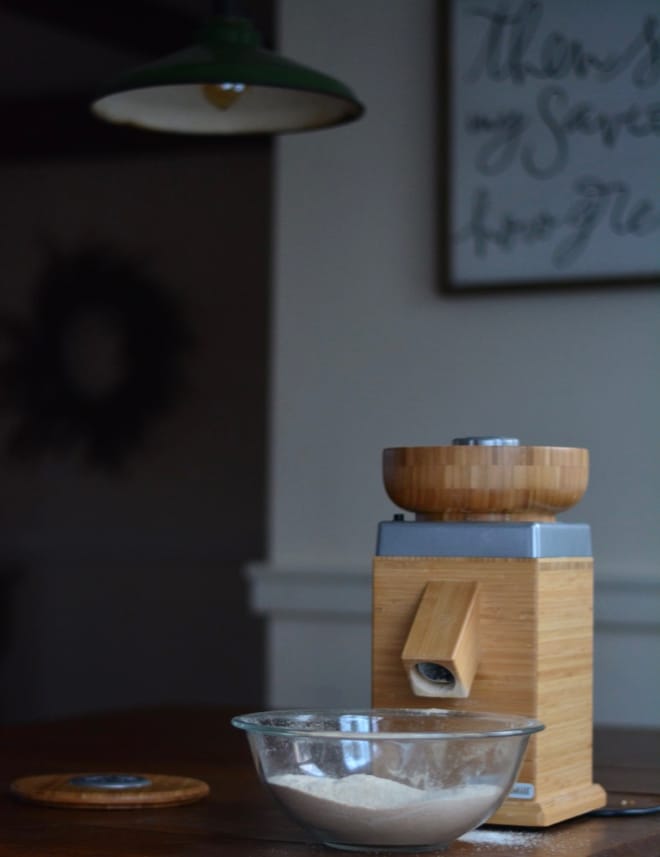
The packaged whole wheat flour in the paper bags that smells like playdough when you open the bag? It’s not that different from the enriched white flour right beside it. Whole wheat flour from the store is processed the exact same way white flour is–at high heat so it destroys all the nutrients, the bran and germ completely stripped away, and at the very end of the process, to make the flour “whole wheat,” a small percentage of the bran and germ are added back in once they’re “defatted” so they won’t go rancid on the shelf.
Not to mention the fact that commercially milled flour gets very hot during every step of the milling process, and heat lots of nutrients to be lost. When we mill our own, we’re able to monitor the temperature of the flour to make sure we preserve as many nutrients as possible.
So, I think the question isn’t “why can’t I just buy whole wheat flour from the store instead?” but rather should be “why on earth wouldn’t I want to easily mill my own flour, on demand, that contains all three (healthy!) parts of the wheat berry, doesn’t get super hot during milling causing it to go rancid, and just plain tastes better?”
In short, all of this could be summed up in this quote from Jonathan Stevens from a bread company in Massachusetts; “The problem with almost all the whole wheat flour that you can get in the store is that it’s rancid already, and you won’t really know that until you try to make a loaf of bread and it just doesn’t perform right, it doesn’t taste quite special. And you blame yourself.”
Are you convinced yet? Fresh milled flour is just superior to commercial “whole wheat” products. So let’s talk about these 5 benefits to milling your own flour.
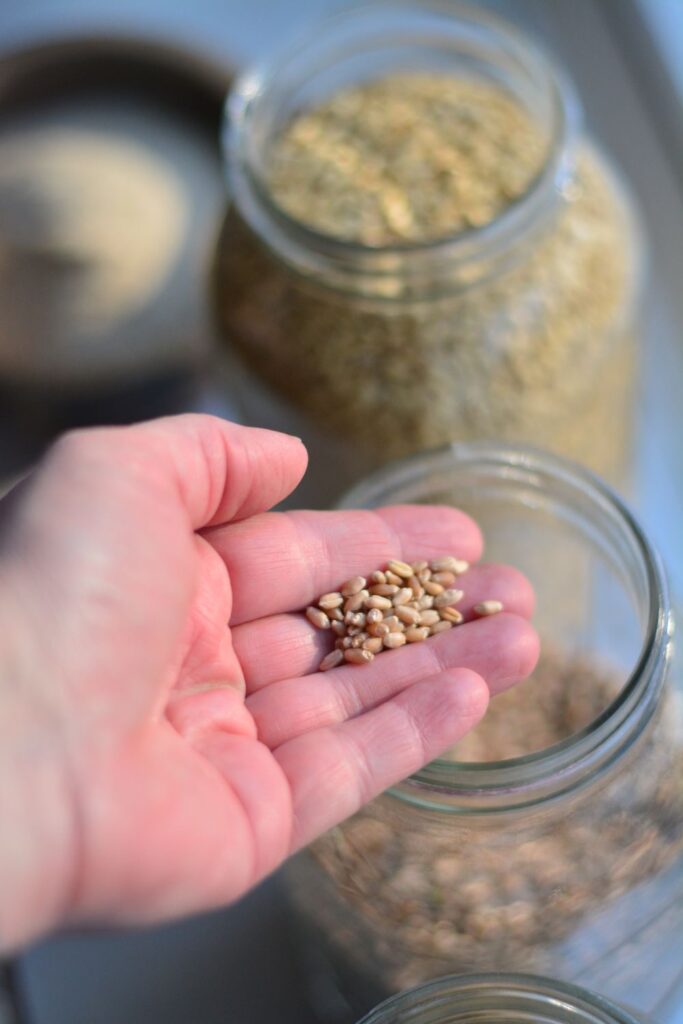
#1 benefit of milling your own flour: to eat locally
Until a few years ago I never thought about the flour I was eating at all, let alone imagined my flour could be a locally grown food. However, since milling my own flour, I’ve been able to find a few local mills and grain farmers that are willing to sell me locally grown grains at bulk prices.
As more people are starting to see the value in eating as much locally raised food as possible, why not add flour to that list? When you start asking around, you might be shocked at what options are available to you locally. If you could eat local flour, why not do so?
#2 benefit of milling your own flour: to eat variety
When you mill your own flour, you’re able to utilize so many different fun, tasty, and beautiful varieties of wheat and alternative grains. Deciding which type of grain to use in my breads and baked goods has become fun for me and is just one more way to get a variety of different vitamins and minerals into my family’s bellies.
Given that different types of grains and wheats all have different makeups and different vitamin profiles, I really love using different varieties all the time knowing that I’m getting true variety in my diet. Why eat one type of grain when you could eat 15 different fun, nutritious kinds? Finding and trying new and different kinds of grains has truly been such fun and brought me so much enjoyment in my home milling journey. Learn about the importance of keeping variety in your diet here.
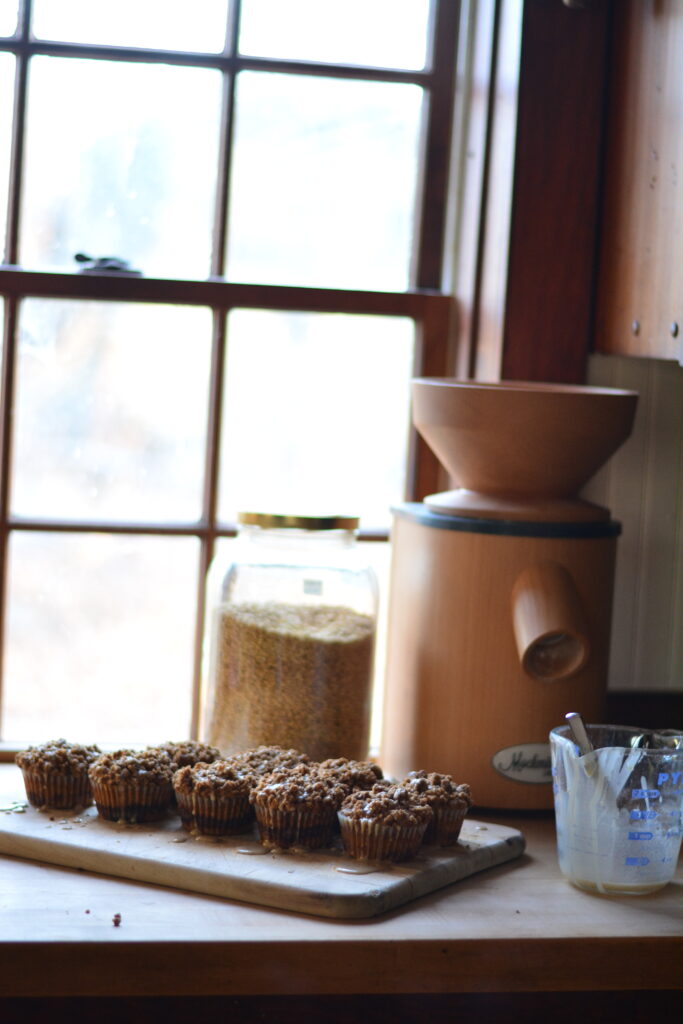
#3 benefit of milling your own flour: for better taste
Fresher just tastes better. We know for a fact that a compost-grown, heirloom-variety, warm-from-the-sun tomato is a completely different, more flavorful, juicy and robust tomato than you could ever purchase from a supermarket store. Why not think of wheat and flour the same way?
I dare you to eat a carefully crafted, fluffy bread made from locally sourced, full-flavored whole grain flour and not wonder what exactly happened to bread to make us call the white cardboard on the store shelves by the same name.
What a shame that we–as a culture–have taken foods that are naturally full of nutrients and flavor that have an incredible texture and decided that they would be better bland, void of nutrients, and with a uniform, stick-to-the-roof-of-your-mouth texture. We can do better than that. Let’s do better.
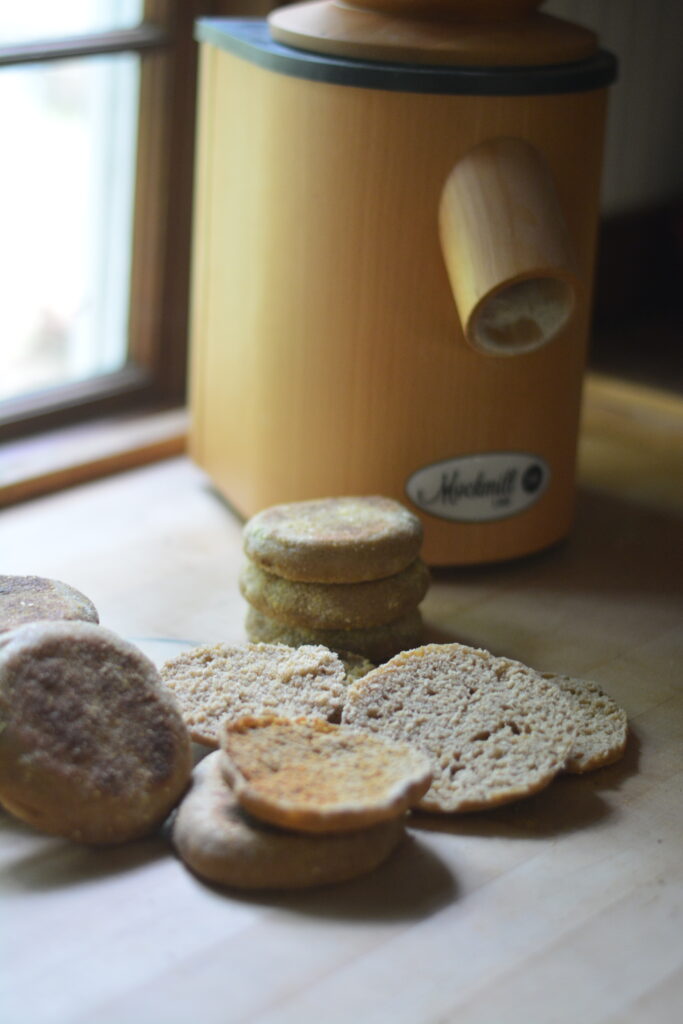
#4 benefit of milling your own flour: to save money
I spend less on flour now than I did before I bought a grain mill, stocked up on wheat berries, and mill all my flour at home. Let me walk you through how.
For starters, it’s important that you understand I used to purchase organic flour. I now purchase organic wheat berries instead. Not only is the flour I eat now far superior, but it’s also cheaper.
It’s also important to understand that your cost is going to fluctuate dramatically based on what kinds of grains you buy. And if you’re on a tight budget, you’re probably not going to be buying tons of different, unique varieties of wheat to try. You’ll instead stick to the basics and buy those in bulk. Nothing wrong with that.
On their website, King Arthur Organic whole wheat flour is $10.95 for 5 pounds. That’s the exact flour I used to pick up off the store shelf and use for all my baking projects.
Nowadays if I’m baking a standard loaf of bread, I’m buying and using organic hard red wheat berries, which cost $6.40 for 5 pounds when I’m writing this. That means you’re spending $2.19 a pound for dead, old, store flour. When you purchase whole wheat berries, you’re spending $1.28 per pound. (Wheat berries translate to flour pound for pound, minus a tiny, almost untraceable amount of product loss during milling.)
That’s $0.91 a pound cheaper to mill your own flour.
And that’s IF (big if) you’re not able to purchase wheat berries in bulk.
I usually buy 50 lbs of hard red wheat berries, which is currently only $0.81 per pound, making my flour $1.38 CHEAPER per pound than the flour I used to purchase at the store, which really adds up when you’re making a couple loaves of bread at a time.
Obviously there’s also an upfront cost of investing in a grain mill to consider in your expenses, but if you’re baking 4 loaves of bread a week, saving $1.38/pound in flour costs, you’re easily going to save HUNDREDS of dollars per YEAR, which means your mill will pay for itself in no time at all. (Assuming you’re using about a pound of flour per loaf of bread, which is average.)
These savings will go up even more if you’re used to purchasing a whole wheat, organic loaf bread at the store that you can now make yourself for cheaper!
These specific numbers are based on my personal experience and the savings I’ve seen since milling my own flour. I’m not saying they’re going to be exactly the same for everyone, but this is just the math I’ve done for my family to see how much I personally save when milling my own flour.
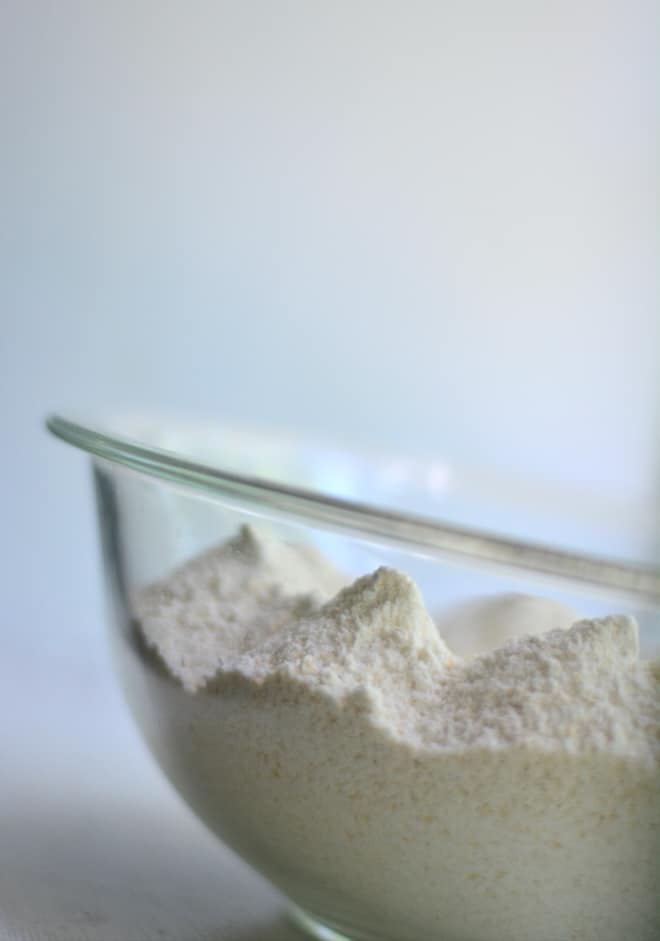
#5 benefit of milling your own flour: for food security
I’m not a prepper by any means. But I do love the idea that I have hundreds of pounds of unground flour in my root cellar! Since wheat berries last pretty much forever, I love stocking up on lots of different varieties of wheat and grains knowing that if I wasn’t able to get to a grocery store for long periods of time I’d still have enough grains stored up to have fresh flour for a very long time.
Need a mill? These are my top picks:
If you need more help choosing, check out my Ultimate Guide to Choosing a Grain Mill!

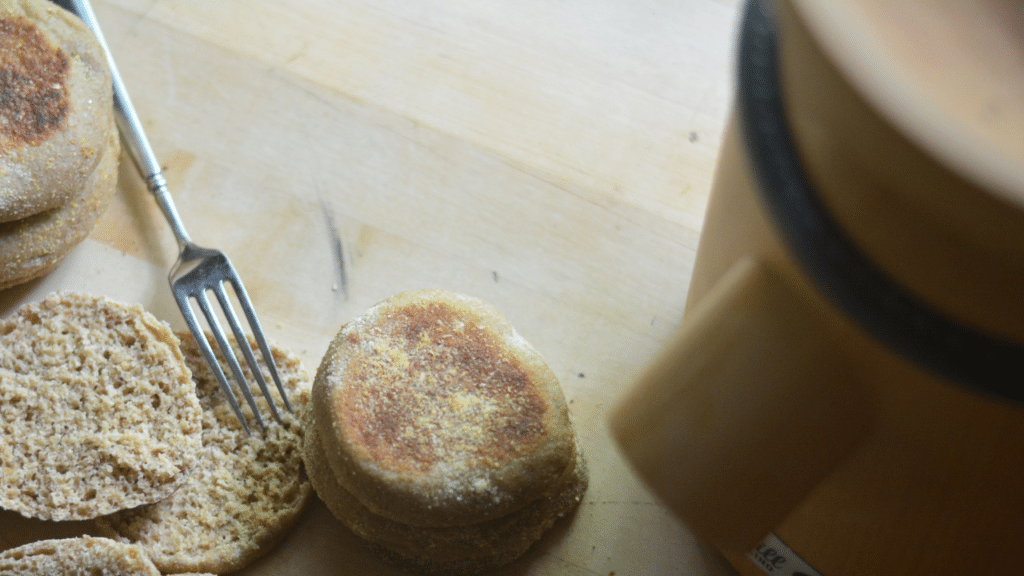



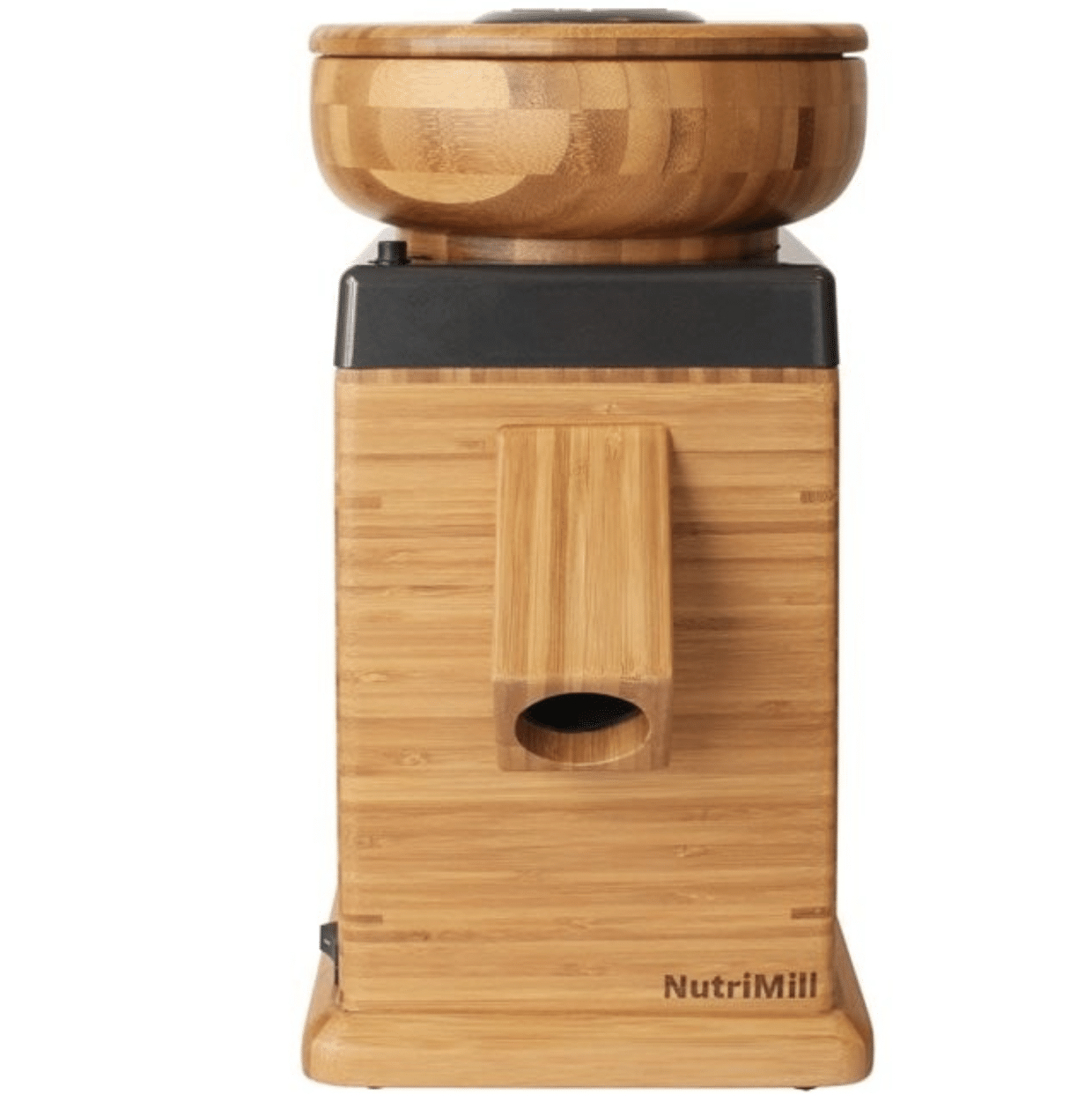
I absolutely want to start!
If you need some insights to decide the best mill for you: https://soulyrested.com/grain-mill/
Okay, I’ve gotta find a grain farmer now! Eating locally is such a big goal for our family, I never thought of a grain mill as an opportunity for doing that more. For now we’ll have to stick with Azure, though
Thank you for the information – I am saving up for mine ❤️
It’s such a great thing to save up for! Hoping you reach your goal soon! Maybe this will be the year 🙂
Is a pound of berries equal to pound of flour
yes, unless you are sifting out some of the bran.
I’m still curious about how you can make things that typically require white flour. Do you use soft wheat berries or hard white wheat berries?
This article will answer that for you: https://soulyrested.com/wheat-berries/